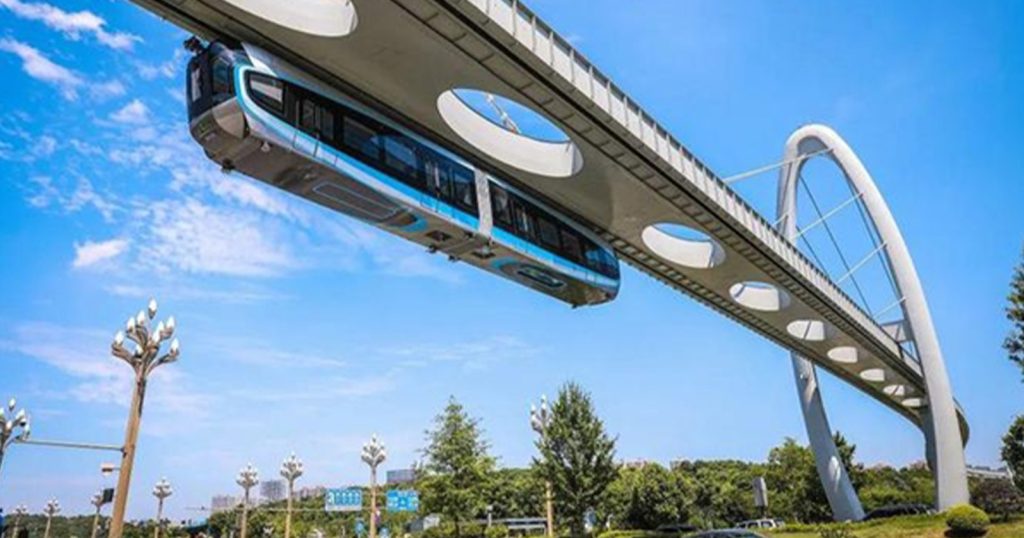Technology continues to simplify our lives and save us time. For instance, distances that once took a long time to cover can now be traversed in just hours or even minutes. However, this convenience comes with its set of challenges. For example, the environmental pollution caused by our cars is silently pushing our planet towards disaster.
Recognizing this, authorities are hoping to mitigate traffic and environmental pollution with eco-friendly public transportation solutions. China is among the countries leading this initiative. Recently, the country opened its first suspended monorail for operation, offering a futuristic mode of transport. Here are the details…
Suspended Monorail Opens in China, Offering Stunning Views and a Glimpse into the Future
For those who might not know, a suspended monorail is a type of monorail where the train hangs from the bottom of the track. This design has several advantages over traditional monorails, such as reduced noise and vibration, enhanced safety, and a more efficient use of space. Recently, China introduced this beneficial public transportation system to its citizens. China’s first suspended monorail line began operating in Wuhan.

The line, called the Wuhan Guanggu Aerial Rail Tourist Line, is located in the city’s east lake high-tech zone and is designed to connect the Nine Peaks National Forest Park and the Longquanshan Ming Chuwang Tomb Archaeological Site Park. The line is 10.5 kilometers long and has six stations. Trains run at a top speed of 60 kilometers per hour and can carry up to 220 passengers. They are fully automated and have large windows that offer passengers panoramic views of the surrounding area.
Of course, the cost of being part of such a comprehensive project is quite high. The total cost of the project was 2.5 billion Yuan, which is approximately US$341 million. However, money is not the only thing we need to be a part of such a project; we also need time. For instance, construction began in 2019 and was completed in 2023. We hope that the number of such eco-friendly projects increases over time.
RELATED:
- Best Smart Glasses of 2023: Xreal, RayBan, Rokid & More
- Geely Galaxy L6 PHEV sedan with 1,370 km range launched in China starting at $15,900
- Spy Photos Reveal Xiaomi Electric Vehicle with Earbuds-Like Trunk Design
- Polestar Joins Growing Trend of EV Makers Launching Smartphones
- The Future of Electric Vehicles Is Here: CATL Debuts 10-Minute Charge, 400-Kilometer Range Shenxing Battery
(source)






